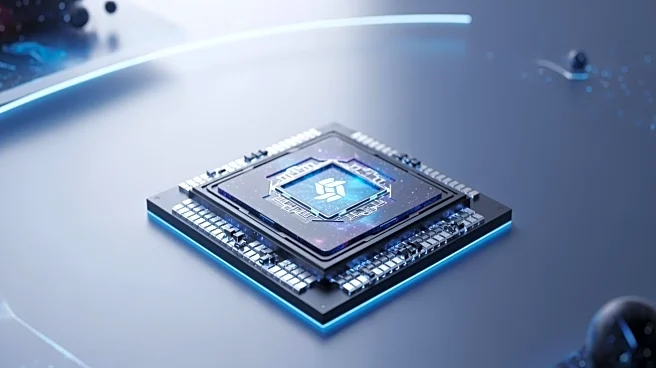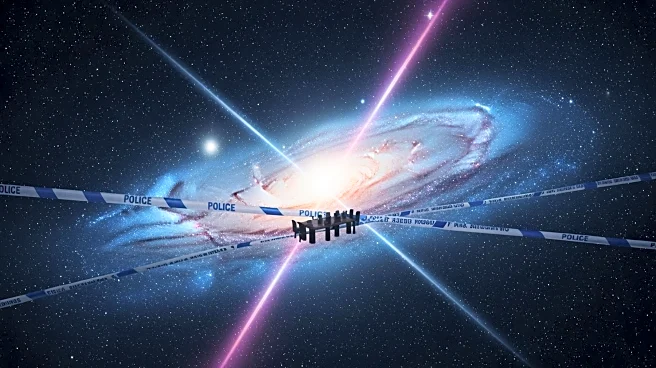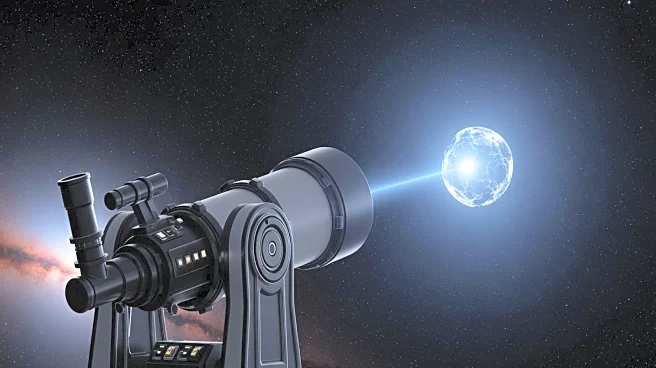What's Happening?
A research team from Tsinghua University in China has introduced a groundbreaking spectroscopic imaging chip named RAFAEL, which promises to revolutionize the way the universe is observed. Published in Nature,
this innovation addresses the longstanding challenge of balancing spectral resolution with throughput efficiency in spectroscopy. Traditionally, achieving ultra-high resolution in spectroscopic instruments has required sacrificing throughput, but RAFAEL overcomes this limitation through integrated lithium-niobate photonics. This allows each pixel in the sensor to capture complete spectral data with high optical transmittance. The chip boasts a 10-megapixel spatial resolution and a spectral precision of 0.05 nanometers, covering visible to near-infrared wavelengths. In a demonstration, RAFAEL captured spectra from up to 5,600 stars in a single exposure, marking a significant improvement in observational efficiency compared to existing astronomical spectrometers.
Why It's Important?
The development of RAFAEL is significant for multiple scientific fields, including astrophysics and materials science. By enabling high-resolution and efficient spectroscopic observations, the chip could lead to new insights into complex cosmic phenomena such as dark matter and black holes. This advancement not only enhances the capabilities of astronomical research but also sets a new standard for spectroscopic technology. The ability to capture detailed spectral data efficiently could accelerate discoveries in physics and chemistry, impacting both academic research and practical applications in technology and industry. Researchers and institutions involved in space exploration and cosmic studies stand to benefit greatly from this innovation.
What's Next?
The introduction of RAFAEL may prompt further developments in spectroscopic technology, encouraging other research institutions to explore similar innovations. As the chip becomes integrated into more observational platforms, it could lead to a surge in data collection and analysis, potentially unveiling new cosmic phenomena. The scientific community may see increased collaboration to leverage this technology for broader applications, including environmental monitoring and medical imaging. Additionally, the chip's compact design could inspire advancements in portable spectroscopic devices, expanding its use beyond traditional astronomical settings.
Beyond the Headlines
RAFAEL's development highlights the growing importance of interdisciplinary research, combining photonics, materials science, and astronomy. The chip's name, 'Yuheng,' reflects a cultural connection to ancient Chinese astronomy, emphasizing precision and balance. This cultural aspect underscores the role of historical knowledge in modern scientific advancements. Furthermore, the chip's potential to transform observational benchmarks could lead to ethical discussions about data privacy and the management of vast amounts of cosmic data.











